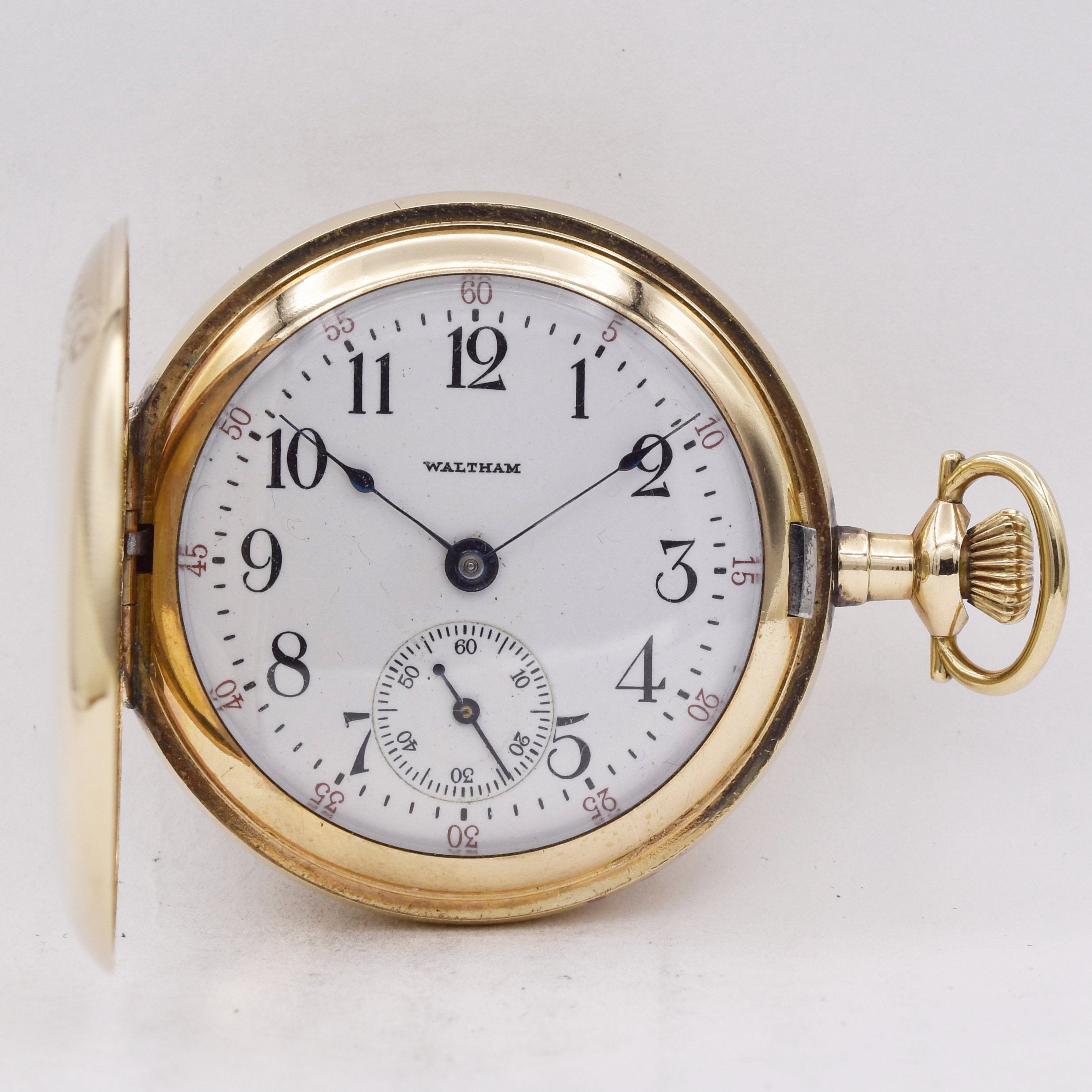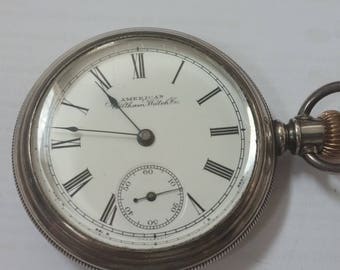
#Waltham pocket watch vintage how to
If you are fortunate enough to have a winding-indicator watch, then you should know how to properly use it.

The up-down indicator is a small dial indicating the amount of "power reserve" left in the wound mainspring. Some of the highest quality pocketwatches were equipped with a "wind-indicator" also called an "up-down indicator". Pocket watches with winding-indicators (up-down indicator) You'd be surprised how many people we run into who are reluctant to wind their watches all the way, then they wonder why the watch stops after only a few hours. Obviously, you don't want to use brute force or a pair of pliers to crank it past the stopping point or you'll break something, but you don't have to be afraid of breaking your mainspring if you're hand-winding your watch. When you wind the watch, wind it all the way until it doesn't wind anymore. This contributes to consistent timekeeping and prepares the watch for the bumps and bangs that it will encounter during everyday use. It's a good idea to get in the habit of winding your watch at about the same time each day. Less power meant that a thinner mainspring could be used, which meant that a longer mainspring could fit into the same size mainspring barrel.Ī vintage pocket watch should be wound once a day if in regular service. Longer run times were achieved by making a more efficient, low-friction movement which meant the watch could run on less mainspring power. 30 hours would be better! Some watches were capable of much longer run-times, 36 to 48 hours isn't uncommon for higher-grade watches and some models, like the Illinois Bunn Special "Motor Barrel" could run as long as 60 hours.

#Waltham pocket watch vintage full
SPONSORED ADVERTISEMENTS How much and how often to wind your vintage pocket watch?Ī mechanical pocket watch should be able to run for at least 24-28 hours on a full wind of the mainspring. You would have to find a correct case to fit your particular movement, which can be a difficult task. There's nothing that can be done to make the holes line up (no, you really can't drill new ones).

If the hole in your case doesn't line up with the winding square in the key-wind movement, it's because your watch is not in its correct case. Blaming the problem on an over-wound mainspring would be like saying your car won't run because you have too much gas in your tank. If the watch is fully wound and it doesn't run, it's because there's something wrong with it. There is really no such thing as an over-wound watch. If the winding crown (or key) won't turn in either direction, then the watch is probably fully wound and won't run because of some other problem. If the winding crown (or key) turns forever and you never build up any mainspring tension, then your mainspring is very likely broken (or missing). If you are trying to wind your watch and can't, there could be several reasons. You may need one key to wind the watch and another to set the watch, or you may just need a single key if the winding square and the setting arbor are the same size. We also stock single keys in select sizes. We have full sets of winding keys available on our Watch Accessories page. If you have a keywind watch and you don't have a winding key for it, or if you've lost the winding key for your antique pocket watch, there are replacement keys available. Bartlett key-wind watch in coin-silver case Lost or Missing Pocket Watch Winding Keys Best bet is to have the watch looked at because continued forced winding is almost guaranteed to cause damage. There are several wheels and gears involved in winding the watch, and damage to any one of them can cause rough winding. This means that something in the winding mechanism is not engaging properly and the watch needs to be professionally serviced.

If you turn the winding knob and feel or hear any kind of grinding noise then STOP WINDING. The forward stroke of your thumb is the winding stroke. If you are right-handed, you hold the watch in your left hand and wind with the right. The winding wheel is usually equipped with a ratcheting mechanism, so the watch only winds in one direction the other direction is just "ratcheting back" to make it easier to wind. On a stem-wind watch, the watch is wound by turning the winding crown, almost always in a clockwise direction. When you wind a watch, what you are really doing is winding up the mainspring, which sits inside the mainspring barrel (a little metal "can" that keeps the mainspring from exploding like a tangled-up slinky). Pocket watches are typically either stem-wound or key-wound. How much / how often should I wind my vintage watch? Pocketwatch 101 ℠ – Learn about Vintage and Antique Pocket Watches How to Wind a Vintage Pocket Watch


 0 kommentar(er)
0 kommentar(er)
